|
DAVINCI - ANNUNCIATION
- Davinci first
professional work at age 20.
- Wing's repainted by
unknown artist (likely named William).
- Angel Gabriel announcing the conception
to Virgin Mary.
- "The most perfect representation of the
visual world" (Vittorio Storaro).
- A Nun Cia shun.
"Greetings, O favored one, the Lord is with you!” But she was greatly troubled at the saying, and tried to discern what sort of greeting this might be. (Luke 1:26-80)
|
|

Storm Clouds in
Woods
|
- Answering the call in the Fool's Journey.
- Norway Spruce,
Cedar, Fir, Cypress.
He will blossom like the lily,
And he will take
root like the cedars of Lebanon. (Hosea 14:4-5)
|
|
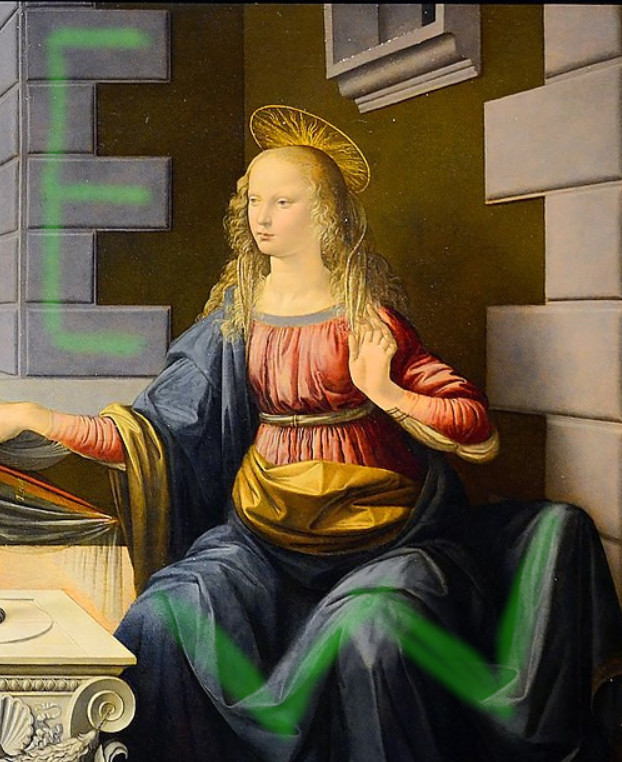
Elizabeth Woodville
|
- Palace garden.
- Cornerstone.
- E.W. - Elizabeth
Woodville (Dame Elizabeth Grey).
- The Woodville family gained enormous influence and were granted large estates in Wales.
- Secret marriage to King
Edward IV (1442-1483) of England (1st Yorkist and champion of
the Wars of the Roses).
King Edward IV was reprimanded by his mother, the Duchess of York, for marrying Elizabeth Grey, a widowed commoner. As the king and his lords attempt to reassure the duchess and to tell her that it is better to marry for love than out of dynastic necessity (and that she will soon have grandchildren out of the marriage), the duchess laments on how many people, particularly the nobles, will oppose the marriage.
Queen Elizabeth further reassures the duchess by informing her that she does have some noble blood within her and that she is virtuous nonetheless. (shakespeareandhistory.com)
|
|
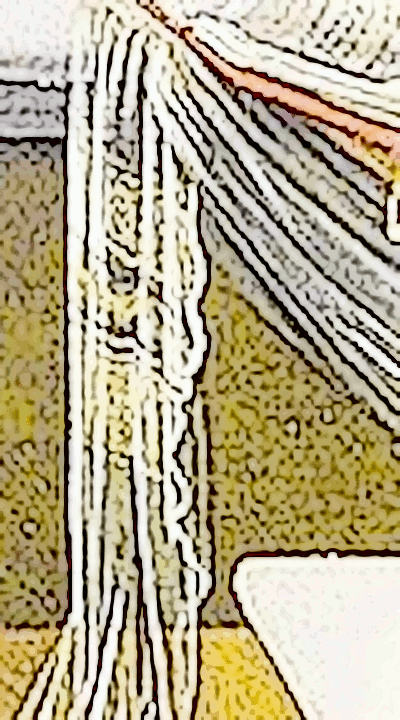
Hispanic-Arabic embroidery
|
- The veil is decorated with geometric
motifs made up of alternated horizontal bands with a design of
interlaced lozenges of Hispanic-Arabic origin.
- This was a
style that the Florentine fabric makers incorporated in their
patterns starting in the mid-13th-century.
- Is said
to allude to the shroud that the Body of Christ was wrapped in
and is an example of religious secretism.
An acolyte, dating to the second half of the
13th-century and attributed to Arnolfo di Cambio, is
shown holding in his hand a bottle of Islamic
workmanship with a rare legend in Arabic; "The
prosperity of the kingdom is imminent, Good luck." In
iconographic terms, this represents a significant
novelty in Florentine 15th-century painting since it
successfully combines Arabic and Hebrew culture, even
in a symbolic sense. (Diego Crociani and Caterina
Marrone)
|
- Draped in royal blue and
gold coronation robe.
- Sitting in front of stone sarcophagus.
Edward of York was born the eldest surviving son of Richard Plantagenet, Duke of York, and his wife, Cecily Neville, on April 28, 1442, while the family was stationed in the Norman capital of Rouen, where York was serving as lieutenant of France for King Henry VI.
|
|
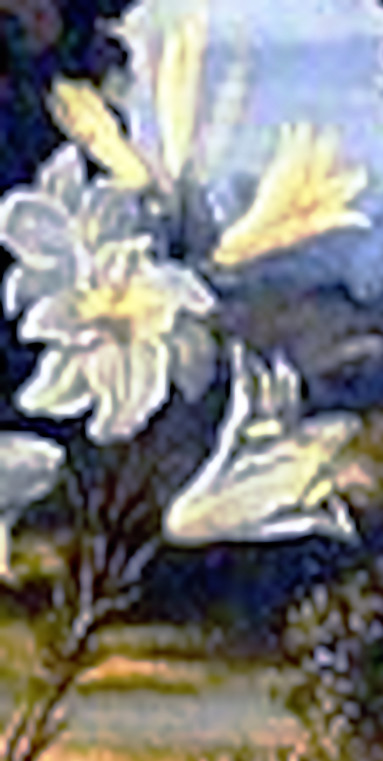
White Queen Lily
|
- White Queen.
- Edward IV was a usurper of the English throne.
- Before
they married he had been betrothed to another lady.
- It
was claimed that the priest who performed their marriage ceremony was in fact, a fraudster.
- The Earl of Warwick (The Kingmaker) was outraged by the
marriage and he began to support Edward's enemies.
- Edward had numerous mistresses.
If someone today married one person while engaged to another it might put a few noses out of joint but that's about all. However, things were quite different in the 15th century. An engagement had almost the same legally binding status as a marriage. In a technical sense, an officially engaged person was already married.
So if Edward was already legally married through his engagement, then the marriage to Elizabeth was null and void. And, of course, any children born after the marriage would be illegitimate. That would mean that Edward, Prince of Wales, and Richard, Duke of York, children of Edward and Elizabeth, were bastards. (britainexpress.com)
|
|
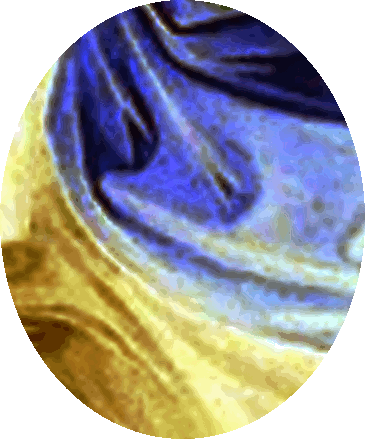
Mayonnaise
|
- Oil and tempera
(water-based, egg yolk) on poplar panel.
- Hellman's
Mayonnaise (oil, egg, vinegar).
- Hell is 234 (or
1134) that's all it is.
- March 25 marks the Annunciation, Orthodoxy and Hellenism
(Greek).
- March 25 was New Year's Day in many pre-modern
Christian countries using Gregorian calendar.
- Biblical Elizabeth, mother of John the Baptist.
And the angel answered her, “The Holy Spirit will
come upon you, and the power of the Most High will
overshadow you; therefore the child to be born will be called holy—the Son of God. And behold, your relative Elizabeth in her old age has also conceived a son, and this is the sixth month with her who was called barren. (Luke 1:26-80)
|
-
Mayon Volcano, Phillippines.
- Mayon naise (woman).
-
Everything is inside out and upside down.
- Mayon volcano myth is a legend about
the origin of the volcano in the Philippines.
|

by photojournalist Ciriaco Santiago III
Mythical Couple that ‘Created’ Mayon Volcano in The Philippines Makes a Dazzling Appearance in
the clouds
|
|
- The myth tells the story of Daragang Magayon
(the lovely one), a beautiful princess who fell in love with Panganoron
(the proud one), a brave warrior from another tribe.
- Her
father,
Makusog (the strong one), chief of the tribe, couldn't allow
them to marry because tribal law forbade marriage outside of
the clan.
-
Their love was also opposed by Pagtuga (the eruptive one), a rival chieftain who wanted to marry her. A war ensued, and both Magayon and Panganoron
were attacked.
- As the couple made their escape from her father and his tribesmen, a poisoned arrow struck Magayon. Then, as Pangaronon was kneeling over the dying Magayon, a warrior stabbed him from behind.
Magayon's father buried them together, and their grave turned into a volcano. The myth says that the eruptions of Mayon are signs of their eternal love or Pagtuga's disturbance.
|
- It is said that even in death and in another form, she is still haunted by the men who loved her.
- When Mayon is said to erupt, this is Patuga challenging Panganoron. But when Mayon is calm, Panganoron is embracing her. The tears of Panganoron are shed as rain at times in his grief.
|
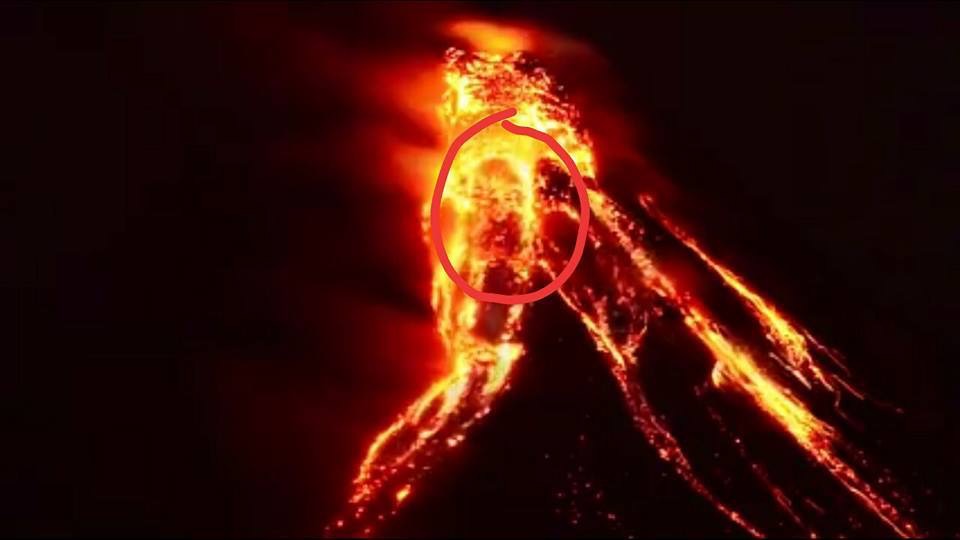
Mayon volcano legend COMES TRUE as faces seen kissing in lava eruption
|
|
|
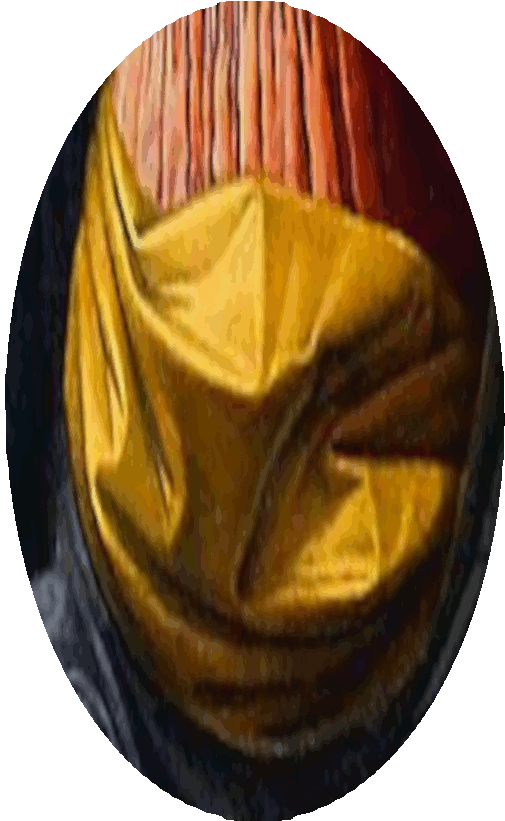
Order of the Golden Fleece
|
- Before he became the king of England, Edward IV was the
4th Duke of York and he earned the title of Earl of March.
- Order of the Golden Fleece, he was known as the 65th knight.
- The Golden Fleece is a metaphor to describe something
impossible to achieve.
- The order was founded in Bruges, Flanders, on January
10, 1430, by Philip III (the Good), the Duke of Burgundy, in
honor of his marriage to Isabella of Portugal.
- Isabella's
grandfather was Edward III and he founded Order of the Garter
in 1348.
Turn him to any cause of policy,
The Gordian Knot of it he will unloose,
Familiar as his garter. (Shakespeare, Henry V)
|
|

Ancient city of Lille, France
|
- The first meeting of the Golden Fleece was held in Lille on November
30, 1431, which is the feast day of Saint Andrew, patron saint
of the House of Normandy.
- The new order was dedicated to
Virgin Mary and Saint Andrew.
- Philip III sought to use the
order to strengthen his ties with the nobility, thereby increasing his own power and prestige.
The creation of the Order of the Golden Fleece was also aimed at upholding a chivalric standard amongst its members. Moreover, there was a religious dimension to the order, as its knights were to promote the glory of God, and to defend the Christian faith.
It is rather intriguing to consider that whilst Christianity and chivalry are supposed to be at the core of the Order of the Golden Fleece, its name, ironically, appears to refer to the story of Jason and the Golden Fleece, a pagan myth centered around a hero with questionable morals. (ancient-origins.net)
|
|
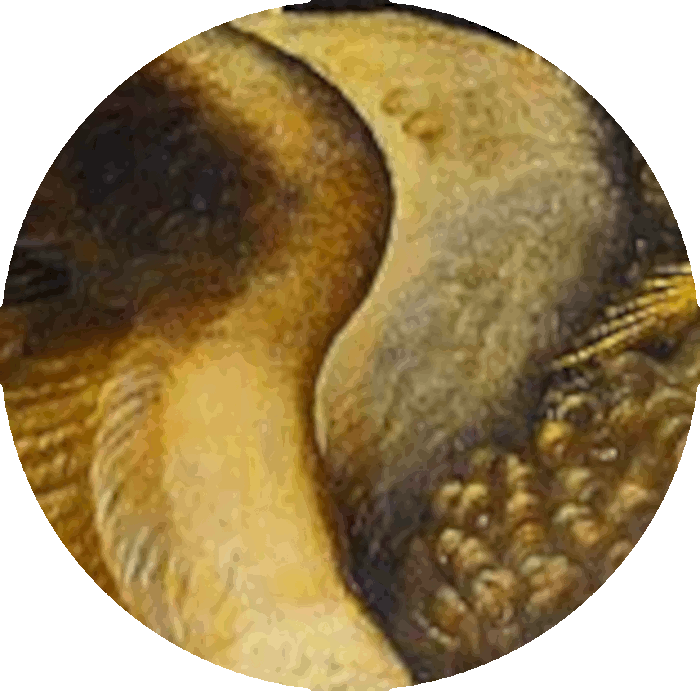
Golden Fleece
|
- Jason and the Golden Fleece is
an ancient Greek myth that came from Apollonius of
Rhode's Argonautica, 3rd Century AD.
- The fleece is
a symbol of authority, wealth, and kingship. It was coveted by
royalty.
- The Golden Fleece was a ram that had hair that was made of
spun gold anyone who possessed it was considered to be a true
ruler.
- Chrysomallos - golden-woolled, winged ram.
|
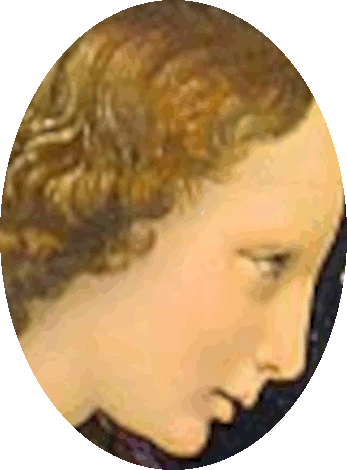
Jason
|
- The main protagonist is Jason,
age 20, son of Aeson, King of Iolcus in Thessaly, who
was the son of the god Crethaus.
- As an
infant, he was sent to the centaur Chiron in Mount
Pelion to be raised.
- He returned to Iolcus as an adult and by that time, he
was the rightful king, however,
the throne had been usurped by Pelias, son of the god
Poseidon, his father's
half-brother.
- Pelias was worried he would lose the
stolen throne so he consulted an oracle at Delphi, Apollo, who warned him a man
wearing one sandal would cause his downfall.
-
Unknown to Pelias, this was Goddess Hera's revenge for killing
his stepmother, Sidero, at her alter years earlier and
prohibiting people to worship Hera.
- Jason had been chosen
by Hera (Queen of the Gods) to carry out the task and his
birth had been hidden from both Pelius and Aeson when his
mother died at his birth.
Jason, whilst on his way back to Iolcus, met an old woman, and carried her across the Anauros River. This old woman was supposed to have been the goddess Hera in disguise.
Jason lost a sandal whilst crossing the river. Therefore, when he arrived in Iolcus, Pelias recognized him as the man with one sandal foretold by the oracle, and became alarmed. (ancient-origins.net)
|
|
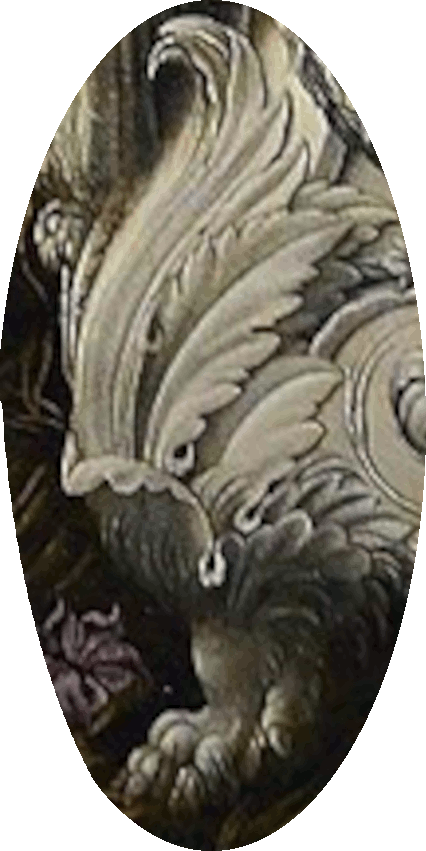
Colchian Dragon
|
- The king was alarmed at Jason's
arrival and realized the prophecy about one sandal was true
and Jason was a dangerous stranger.
- Pelias sent Jason on an
impossible mission to find the Golden Fleece to remove a
curse from the family, hoping Jason would perish in the
process.
- Goddess Hera knew about Jason's impossible
task but he did not know of the Gods involvement in it.
The Golden Fleece belonged to Aeëtes, the King of
Colchis, and was hung on an oak in a grove sacred to
Ares.
Although the fleece was guarded by a dragon that
never sleeps, the myth would demonstrate that Aeëtes
was an even greater obstacle to Jason’s quest than
this beast. In any event, Jason assembled a group of
heroes to aid him on his quest. (ancient-origins.net)
|
|
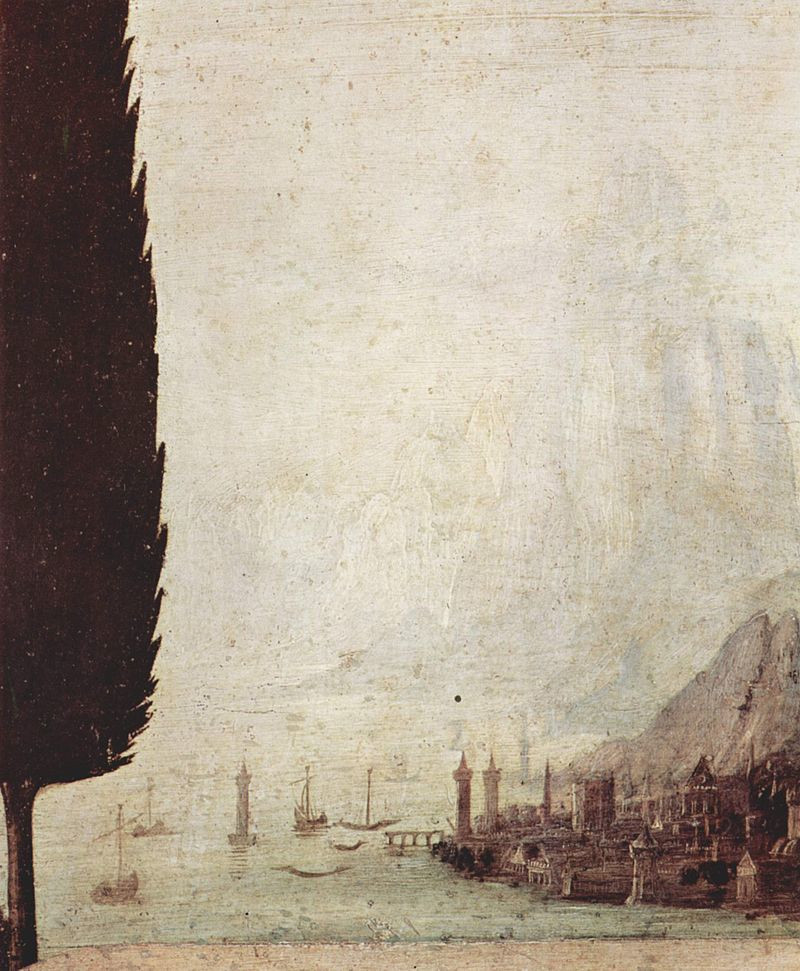
Argo, constructed under Athena's orders
|
- Jason and his companions, a
group of over 50 heroes, became
known as the Argonauts and included the likes of
Hercules, Orpheus, the Gemini twins Castor and Pollux, and Asclepius.
- The Argo was a 50-oar ship designed by the Goddess Athena,
built by Argus, navigated by Tiphis, under the orders of Hera,
more powerful than any ship the Greeks had ever built.
- The
ship was built so that the mast, rudder, anchor and oars could be removed and the ship then
pulled ashore on rolling logs. This would prevent the ship from being destroyed or stolen
and it could be easily hidden away.
|
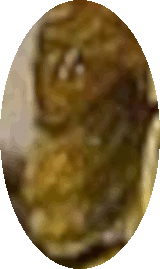
Ship figurehead
|
- The ship was built with a
sacred piece of wood from the oak at Dodona, God's enchanted
forest, and was a gift from Zeus. It was supernatural and had the ability
to cry, shout and talk.
- Some believe the wood was a plank
and others claim it was the ship's figurehead.
|
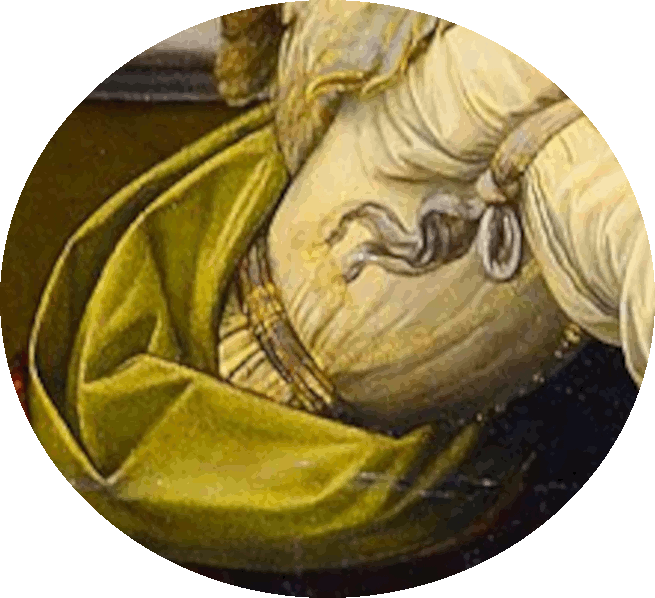
Colchis Bull with bronze mouth
|
- The Argonauts set off on their voyage
and encountered many adventures along the way including
visiting island of Lemnos, land of Doliones, Amycus, Pineaus,
the Symlpegades and Stymphalian Birds.
- Finally, upon
arriving in Colchis, Jason asked Aeëtes for the priceless
Golden Fleece and the king told him he would do so, but he was
not in favor of it.
- Aeëtes, who planned on being king
forever, was so angry, gave
Jason two impossible tasks to do; the first was
to yoke the Khalkotauroi (Colchis Bulls, a pair of huge bulls with bronze hooves and mouths), and to plough a field with
them.
- The second was to sow in the field ploughed by
the bulls the teeth of the dragon that guarded the
Golden Fleece.
|

Ferocious warriors sprout from teeth
|
- The bulls breathed fire and were
impossible to yoke which made the second task
impossible.
- Ferocious warriors would sprout from the teeth once they were sown, and Jason had to defeat them.
|

Goddess Hera
|
- Despite the difficulty, Jason, however, was favored by
the goddess Hera, who helped him by causing Medea, the
daughter of Aeëtes, to fall in love with him by allowing
Eros to strike Medea with one of his arrows.
- Hera knew
that Jason would need Medea to weave her magic.
Medea was a sorceress, and a high priestess of Hecate, so she knew how to accomplish the tasks set by her father. She agreed to help Jason, on the condition that he marry her once he obtained the Golden Fleece.
Jason agreed to Medea’s condition, and was given a magic salve that would protect him from the Khalkotauroi’s fire. For the second task, Medea told Jason to throw a stone amongst the warriors once they sprouted. This would throw them into confusion, and cause them to fight one other. (ancient-origins.net)
|
|

Sacred Grove
|
- Despite Jason accomplishing the
tasks, King Aeëtes refused to hand over the the Golden Fleece
and plotted to murder Jason and the Argonauts.
- Medea discovered her
father's evil plot and led Jason to a sacred grove where he was
able to recover the fleece which was nailed to a tree in a
small garden.
|

Sleepless Dragon protecting Golden Fleece
|
- The fleece was protected by the
Sleepless Dragon and Orpheus, the great music player, and
Medea lulled the dragon to sleep clearing the path.
-
Jason and Medea, along with the
Argonauts, escaped to Colchis.
- Aeëtes and his son, Medea's brother Apsyrtus, chased them
across the seas.
|

Medea uses magic to murder
|
- Medea killed her brother and then
cut him into pieces and threw his body into the water.
-
Aeëtes, in despair, gave up the chase and asked Zeus to punish
Medea and Jason for his son's death.
- Zeus prayed and
drove the Argonauts ship off course and they landed on the
island of Aeaea, were Circe, Medea's aunt lived.
- Circe
was distraught and asked the Argonauts to leave.
- The
Argonauts set off again and found themselves seduced by the
Sirens who were beautiful women who sat on rocks and played
enchanting music causing the sailors to run their ships
aground and perish.
- Orpheus, with his lute, saved the
Argonauts from the Sirens by playing a song more captivating
thus breaking their enchanting spell.
- They traveled
safely past Scylla, a six-headed monster, and Charybdis, the
deadly whirlpool.
- The Argo was guided to the island of
Drepane and it was there that Jason and Medea were married.
|

Talos
|
- As they neared Crete, the exhausted Argonauts were fended
off by a large bronze man named Talos who Medea killed with
magic.
- Next they traveled to the island of Anaphe where
Theras threw a clod of clay into the sea and it created an
island he named Calliste.
|
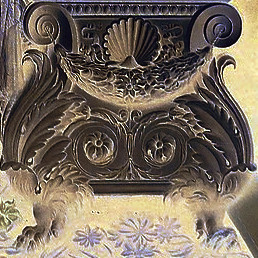
Golden Fleece
|
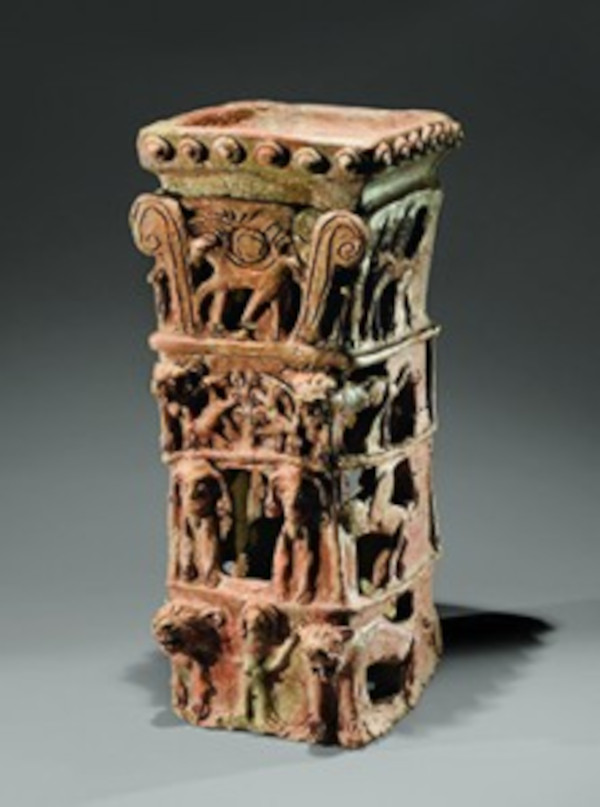
This four-tiered cult stand found at Tanaach is thought to represent Yahweh and Asherah |
- On finally returning to Iolcus
and as Jason hands the Golden Fleece to Pelias, he discovers
that Pelias already murdered his father, Aeson.
- He asks
for Medea's help in exacting revenge against Pelias who
dies after she tricks his daughters into murdering him.
|

Iolcus
|
- The myth does not end with Jason and Medea living happily ever after,
instead, the residents of Iolcus didn't want a sorceress for
their queen.
- So, Jason, after so many adventures to
obtain the Golden Fleece and become a king, relinquished the kingdom to Pelias' son, Acastus.
- Hera avenged herself through Jason by having him obtain the
Golden Fleece and kill Pelius but she no longer had any need
for Jason who went into exile with Medea in Corinth where he
falls in love with the princess.
- Medea was inconsoluble
at his deceit and murders the princess and their three
children and escapes to Athens.
|
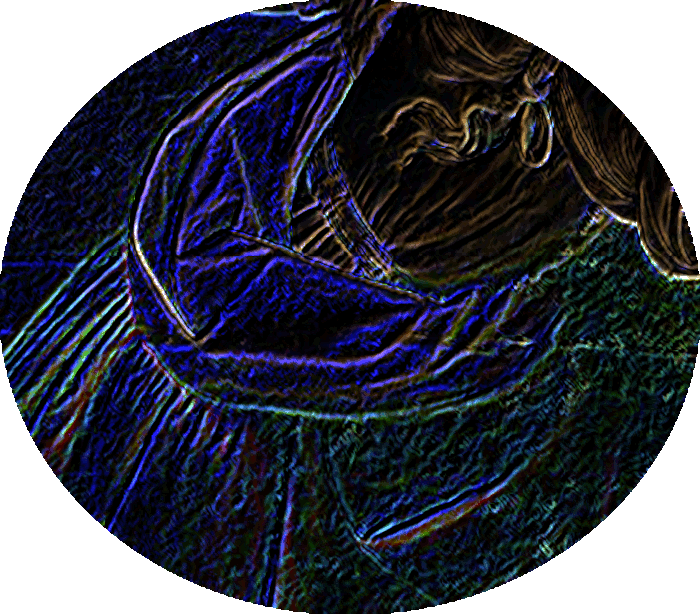
Argo crashes down on him
|
- Jason ended his life as a lonely man
and dies a tragic figure after he asks Zeus to show mercy on
him and a lashing on the dilapitated Argo snapped causing a
beam to fall on him and turns him into a legend.
Better a patient person than a warrior, one with self-control than one who takes a city. (Proverbs 16:32)
|
Moral of the myth!
Jason, the righteous young king and legal heir to the
throne went to work for crooks who had him performing
dangerous jobs to steal the crown back from another
crook that rightfully
belonged to him (not them).
The real truth is, they were too weak to get it for
themselves and they knew Jason was strong so they were
harvesting his energy.
He thought he was being a hero but he wasted a lot of
time and energy. They didn't care what happened to him
and threw him away when they were done with him and
they played on his youth and ignorance.
Don't work for crooks, dispose them instead and take
your crown back.
Don't marry anyone who was conjured up by Eros because
it's not real love, it's black magic and the spell
will break. Short term.
|
|
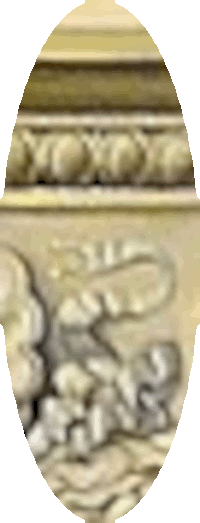
Grounded
|
The use of such a pagan myth involving an arguably less-than-chivalrous protagonist would no doubt be at odds with the core values of Philips’s Order of the Golden Fleece. Yet, an ingenious solution was concocted, allegedly by the Bishop of Nevers, to square this circle.
The bishop proclaimed that the Golden Fleece was
in fact was fleece of Gideon, an Israelite leader
mentioned in the Old Testament’s Book of Judges. Thus,
the order was given a Christian story to lay its
foundations on. (ancient-origins.net)
|
|

Punished for 7 years
|
- The children of Israel ‘did evil in the sight of the Lord’ (Judges 6:1) and from that God caused them to be taken over by Midian for
7 years (Could this be due to Mose's rampage against the
Midianite women and children?).
- During that time the Midianites, Amalekites and those from the East went against Israel and pillaged their lands; leaving nothing to salvage. From this, the children of Israel were grieved and prayed to the Lord.
- The Midianites and Amalekites burned their homes to the ground, rampaged their villages, and confiscated their crops and livestock till the Israelites had no hope of survival.
The first thing to know is that Gideon was
communicating with a lower interdimensional spirit,
Yahweh, who is not the Most High (Source), but rather,
a local God (of Israel).
The Gnostics knew this and called him the Demiurge
(Yaldabaoth). Gnosticism presents a distinction between the highest, unknowable God or Supreme Being and the demiurgic "creator" of the material, identified in some traditions with Yahweh, the God of the Hebrew Bible.
Yahweh was the replacement for the storm god, Baal. He
is in control of the material world and uses law
(Moses) to control us.
The scribe who penned the story of Adam and Eve in the Garden of Eden and much other narrative in the first 5 books of the Hebrew Bible (Pentateuch,
aka Torah) had a distinctly anti-Canaanite agenda
although current day Israel resides in the exact
location of the ancient Canaan. They're the same place
on the map.
Once you understand this, you'll look at the Old
Testament in a whole different way. Remember, the
Bible is not a religious book, it's a book about
metaphysics and astrology. It shows us stories that
are good and others that are bad because they are all
life lessons (and warnings to avoid the bad ones).
|
|
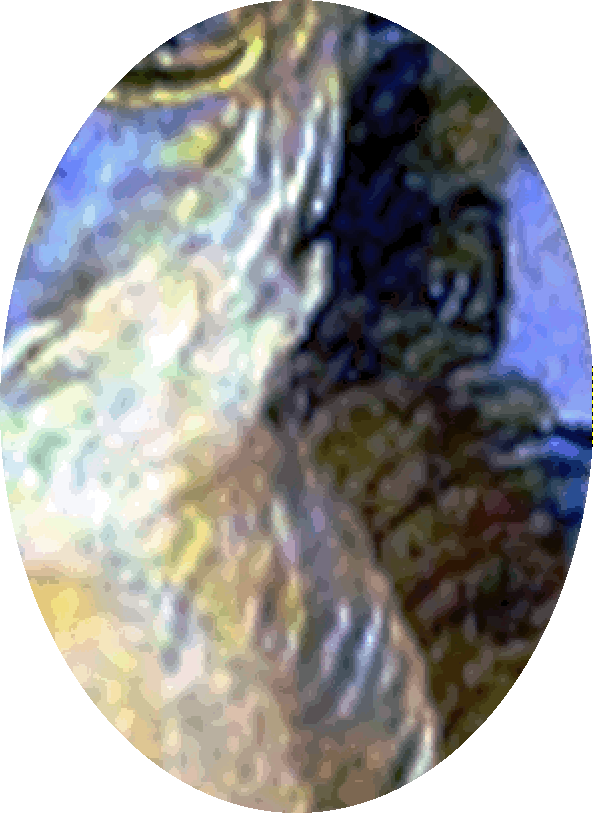
Yaldaboath abuses Asherah and silences her
|
- In Jewish scripture, it was Khokhmah,
'Wisdom,' who personified the Divine feminine. She was understood as an emanation of God,
and resonated with the Hebrew Goddess who is otherwise assailed in the Bible,
Sophia and Asherah (sacred tree).
- My throne was in the pillar of cloud,” she declares in Ben
Sirach (24:4).
- The Hebrews revered Sophia and King Solomon put her in the Temple,
as the Goddess Asherah. However, after the brutal 'reforms' of King Josiah described in 1st and 2nd Kings in
the Bible, the veneration of Sophia went underground.
- Sophia rebukes Yaldaboath
(Yahweh) as a liar and fool when he, unaware of her role in creation, claimed sole divinity
over the earth.
- Yahweh is threatened by Sophia (Eve) and
she leaves a likeness of herself in the Garden of Eden which
he rapes and she gives birth to Cain's children (which despite
Yahweh/Cain are blessed by Eve).
- Wisdom of Solomon, a book in the apocrypha says clearly that Sophia is the Holy Spirit.
-
As time passed, the male patriarchial religions gradually
stripped Sophia and Asherah of their divinity and turned them
into 'fallen goddesses.'
Moses said to God, “When I come to the Israelites
and say to them, ‘The God of your fathers’ [house] has
sent me to you,’ and they ask me, ‘What is [God’s]
name?’ what shall I say to them?” (Exodus 3:13)
|
|
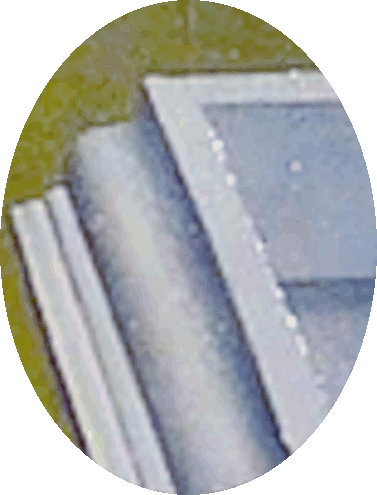
Winepress
|
- Gideon (driver), also called
JerubBaal (Baal will contend), was an Israelite military
leader, judge and prophet who conquered the Midianites.
-
He was chosen by God to free the people of Israel and stop
their idolatry after they began following the customs of their
'evil' neighbors.
-
Gideon was the son of Joash, from the Abiezrite clan in the
weakest tribe
of Manasseh and lived in Ephra (Ophrah).
- Gideon was so afraid of the murderous band of tormentors at large, that he chose to thresh his wheat in a winepress, for fear he might be ambushed in the field.
|
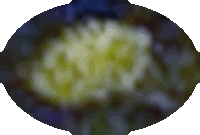
Pottery shard Leeon
|

Pottery shard
from jug |
- A 3,100-year-old
fragment of a jug with his name written in ink was found in
southern Israel.
- His name was also known as Jerubbesheth
and the 'sheth' meant 'shame' and was used by Saul to name a
son and grandson.
|

Terebinth (turpentine) tree hides the Angel
of the Lord
|
- The Angel of the Lord (messenger)
came to Gideon in the form of a traveler and sat down in the shade of a
terebinth (turpentine) tree for a repose.
- The angel greeted Gideon: "The Lord is with you, you mighty man of valor!"
- Gideon, the fifth major judge, was very suspicious and he asked for
proof of God's will by three miracles.
|

Fire shooting out of rock
|
|
- The first miracle was a sign from the Angel by fire
shooting out of a rock.
|
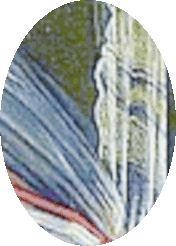
Fleece wet and
land dry
Rain - Baal storm God
|
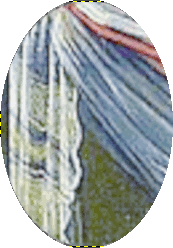
Fleece dry and
land wet
River - Comes from rain |
- The next two miracles
performed on two consecutive nights involved fleece and were
the opposite of each other; First Gideon woke up to his fleece covered in dew, but the surrounding ground dry; then the next morning, his fleece was dry but the surrounding ground covered in dew.
Then Gideon said to God, “If you will save Israel by my hand, as you have said, behold, I am laying a fleece of wool on the threshing floor. If there is dew on the fleece alone, and it is dry on all the ground, then I shall know that you will save Israel by my hand, as you have said.”
And it was so. When he rose early next morning and squeezed the fleece, he wrung enough dew from the fleece to fill a bowl with water. Then Gideon said to God, “Let not your anger burn against me; let me speak just once more. Please let me test just once more with the fleece. Please let it be dry on the fleece only, and on all the ground let there be dew.”
And God did so that night; and it was dry on the fleece only, and on all the ground there was dew. (Judges 6:36–40)
|
|
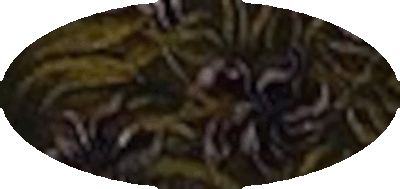
Troops
|
|
- Gideon led a troop of 300 valiant men after God reduced
his troops from 32,000.
The Lord said to Gideon, “You have too many men for me to hand Midian over to you. Israel might brag, ‘Our own strength has delivered us.’ Now, announce to the men, ‘Whoever is shaking with fear may turn around and leave Mount Gilead.’” Twenty-two thousand men went home; ten thousand remained.
(Judges 7:2-3)
|
|
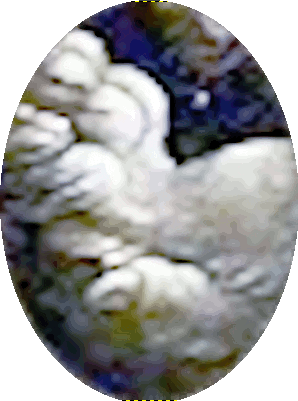
Sheep lapping water
|
|
- Gideon separated the men who lapped the water with their tongues as a dog laps from those who knelt down to drink. The Lord said to Gideon, "With the
300 men that lapped I will save you and give the Midianites into your hands. Let all the others go home."
If you read this carefully you begin
to know that God told Gideon the battle had already been
won and that is the reason he told him to turn back so many
men.
Also, he never ordered Gideon to call for troops.
The troops that lapped the water in their hands
were the Obsessive Compulsive's. Those who are more
inclined to controlling and perfectionism. Lacking
flexibility. Adherence to rules in an inflexible, rigid way.
Problems with self-identity and/or self-direction.
Behind the scenes, the Most High is controlling
the show and he put all them in the boat with Jason
and Gideon for a reason, yes he did.
Think of
them as the 'macho men' of the world running over you
with their truck (because you have different core
values than them).
The troops who initially
were sent home are "the meek who shall inherit the
earth."
|
|

Asherah (Mistress of Lions) hidden
|
|
- On God's instruction, Gideon destroyed the town's altar to Baal and the symbol of the goddess Asherah
who were the 'pagan' idols of his clan.
- Asherah (Queen of
Heaven) was the
wife of Baal and later on (subsequent generations of
worshipers) with El and later with Yahweh, who is the ancestral God of Israel
in the Bible.
- Apparently this
was Yahweh's way of divorcing Asherah.
- Gideon then erected an alter to the Lord (Yahweh) and sacrificed a
bull upon it.
- Note, pagan means anyone who didn't like
the same things as the early patriarchial Jews (namely
females). It wasn't just Magdalene they managed to turn into
an inconsequential prostitute (with their lies and smear).
- This endeavor went against a long line of feminine
Divines such as Lilith (who was completely demonized), Eve,
Magdalene, Virgin Mary, Sophia, Asherah, Isis, Cleopatra,
Astarte, Ishtar... Many of their traits were confused and
conglomerated into a total fabrication.
J. Edward Wright, president of The Arizona Center
for Judaic Studies and The Albright Institute for
Archaeological Research, talked about how several
Hebrew inscriptions mention "Yahweh and his Asherah."
Asherah was not entirely edited out of the Bible by its male editors,
traces of her remain, and based on those traces, archaeological evidence and references to her in texts from nations bordering Israel and Judah, we can reconstruct her role in the religions of the Southern Levant.
Asherah -- known across the ancient Near East by various other names, such as Astarte and Ishtar -- was "an important deity, one who was both mighty and nurturing, Many English translations prefer to translate 'Asherah' as 'Sacred Tree,' This seems to be in part driven by a modern desire, clearly inspired by the Biblical narratives, to hide Asherah behind a veil once again.
Asherah as a tree symbol was even said to have been "chopped down and burned outside the Temple in acts of certain rulers who were trying to 'purify' the cult, and focus on the worship of a single male god, Yahweh. (NBCNews)
|
|

Irate clan members
|
|
- The next morning, his fellow clan
members were irate when they discovered whar he had done so
his father, Joash, told them if Baal was a real God, he
could defend himself when someone tore down his altar.
-
Joash, was evidently a high priest and
had welcomed the worship of Baal and Asherah to his home.
When the destruction was discovered, the men demanded to know who had committed the
heinous crime. When they discovered it was Gideon, they marched to his father's house and demanded, “Bring out your son. He must die, because he has broken down Baal's altar and cut down the Asherah pole beside it” (Judges 6:30). It is only through the intercession of Joash, Gideon's father and chieftain, that his life was spared. (The
Hidden Goddess, Laurie Martin-Gardner)
|
|
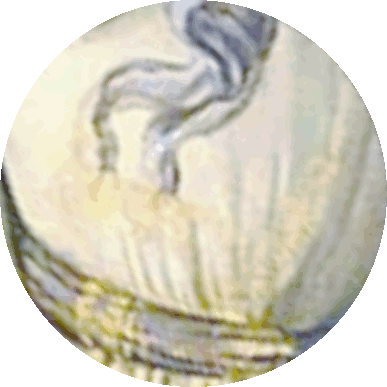
Divine Mother Asherah hidden and in bondage
|
|
- The Tree of Life is the ephihany of Goddess Asherah
(grove or wood).
- What was called 'pagans' was actually early Christians
(Gnostics and such).
- Mother Earth and Father Time and
time purposely forgot about her.
- Represented by Date
Palm (grapevines, pomegranates, walnuts, myrtles, and willow).
- Female pillar figurines.
- The only goddess whose name is well attested in the Hebrew Bible is Asherah.
- When church patriarchs selected the books that became the canonical christian bible, they rejected some of the earliest texts, Gnostic scriptures. Among these excluded scriptures were writings that pictured Wisdom as a divine, creative female presence.
The variant picture of the Gnostic scriptures reflects an intense campaign to beat down goddess veneration and to split body and spirit. The tension is more open in the Gnostic gospels precisely because the female divinity is still powerful, in contrast to the christian canon. It was in Egypt and other centers of the Mysteries that the last stand for open Goddess worship was fought -- and ultimately lost -- on the battleground of Gnosticism.
Eradicating the Goddess proved to be an impossible task. She survived in myriads of forms in popular belief, veiled as Mary or christian saints. The Virgin Mary occupied a much less powerful position in church doctrine and scriptures than the old pagan Goddess. Folk tradition is another story; there devotion shifted to Mary from the old goddesses and persisted over centuries as new ethnicities entered christendom. Due to this popular pressure and the role it played in the clergy's conversion strategy, Mary escaped the degradation that Gnostic christians ended up heaping on Sophia, and the stigma that theologians cast over Eve. Catholicism ended up absorbing goddess traditions over the centuries, through progressive engorgements, while Gnosticism gradually shed them. (Khokhmah and Sophia, Max Dashú)
|
|

Triple Goddess
|
|
- The Handmaid's Tale.
- Qetesh together with hieroglyphs taken from a separate Egyptian relief (the "Triple Goddess stone").
- In the Ugaritic tales she is known as Athirat and is the consort to the great father god, El.
She walked on water 1,400 years before Christ (1440-1300
BCE).
- Known as “Lady Asherah of the Sea” and “She who walks on the sea.” As Athirat, a cognate name for Asherah, she is mother of 70 children (this relates to the Jewish idea of the 70 guardian angels of the nations).
From the Vulgate, the King James translation of the Bible uses grove or groves instead of Asherah's name. Non-scholarly English language readers of the Bible would not have read her name for more than 400 years afterward. (Wikipedia)
|
|

Midian Mountain
|
|
- Khirbet el-Qom and Kuntillet Ajrud ("Yahweh of Samaria and his Asherah" and "Yahweh of Teman and his Asherah").
Two small states, not the universe.
- Yahweh was an ancient Levantine deity, and national god of the Israelite kingdoms of Israel and Judah
(Wikipedia).
- He is the God of the Old Testament (law).
- Demonized and turned the Divine Feminine into a beast.
- The origins of his worship reach at least to the early Iron Age, and likely to the Late Bronze Age, if not somewhat earlier.
- Bacchus–Dionysus.
- Golden Calf sits on the
hill.
The Hebrew Bible frequently and graphically associates goddess worship with prostitution ("whoredom") in material written after the reforms of Josiah. Jeremiah, and Ezekiel blame the goddess religion for making Yahweh "jealous", and cite his jealousy as the reason Yahweh allowed the destruction of Jerusalem.
The Hebrew term qadishtu, formerly translated as
"temple prostitutes" or "shrine prostitutes",
literally means "priestesses" or "consecrated women"
from qds meaning "holy". However, there is a growing scholarly consensus that sacred prostitution never existed, and that sex acts within the temple were strictly limited to yearly sacred fertility rites aimed at assuring an abundant harvest. (Wikipedia)
|
|

Trumpet
|
|
- Meanwhile, the
harassing clans and rebels joined forces and they marched to
the valley of Jezreel to annihilate God's people.
-
Gideon, struggling with fear and doubt, blew his trumpet to
rally the neighboring Israelites to war.
- Once again,
Gideon asked God for a sign.
- Armed only with trumpets and torch
jars the Israelites went to war.
- On Gideon's command,
they blew their trumpets and smashed the jars.
As a result of these events, by the end of the story Yahweh is supreme and in control of all divine powers and functions formerly in the hands of the Goddess, and Canaanite religion in general has been discredited.
Yahweh is in charge of the garden (formerly the Goddess’ province), from which chaos has been removed. Sacred tree veneration has been prohibited and discredited, while Yahweh appropriates and identifies himself with the Tree of Life (see also Hosea 14:8, where Yahweh claims, “I am like an evergreen cypress, from me comes your fruit.”).
The serpent has been vanquished, flattened, and deprived of divine qualities, and thus is not worthy of veneration, and enmity has been established between snakes and humans. The Goddess has been discredited, rendered powerless, and is eliminated from the picture and sent into oblivion. Yahweh’s divorce from her has been made final, at least in the author’s mind. But in fact she persisted, and her equivalents in the psyche inevitably have persisted to this day, as they must. (Arthur George, Yahweh's divorce from Asherah)
|
|

Sword
|
|
- God
caused much confusion and those who didn't turn a sword
against each other fled for their lives.
- Gideon captured two Midianite kings, Zebah and Zalmunna, and killed them. The Israelites then enjoyed peace for
40 years.
- Gideon, youngest
in his family and from the smallest tribe in Israel obeyed
God. Yes, he certainly did. He worked very admirably for his
fellow citizens.
- Torches in
left hands, and holding the trumpets in their right hands,
they shouted, 'A sword for the Lord and for Gideon!'
Live by the sword, die by the sword. (Matthew
26:52)
|
|

Gideon's troops
|
|
-
If “All’s well that ends well,” then all is not well with either Gideon or Israel.
- God limited Gideon's troops and let him know the battle was
already won but Gideon went into battle headstrong and
neglected to give the Most High credit for the win (he turned
it into 'Gideon's sword.'
- Gideon’s “ephod” becomes an idol that the Israelites
worship and ironically, it's set up in his home town of Ophrah, the very place where
he tore down the altar of Baal and the sacred Asherah pole.
- Gideon had a harem. The average Israelite did not have “many wives” and “seventy sons,” along with a concubine (8:30-31). Even David did not
match Gideon to this extent.
- Watch: Is Yahweh NOTHING More Than A
Copy of The God BAAL?
- Watch: The Moon Matrix (The Technology Of The Fallen World)
- God's Wife Edited Out of the Bible -- Almost
Moral of the story!
Gideon was tapping into lower dimensional spirit,
Yahweh, who was a jealous earth god (Ancestral God of
Israel). In other words, he wasn't the Most High (aka
Source). He represents Moses law (which Christ was
trying to eliminate).
He was a demigod. He called himself all the same
identical names as the Most High so he could confuse
everyone and garner respect and obedience he didn't
deserve (Lord, God, Adonai, Jehovah, etc.)
Gideon was used the same way that Jason and the Golden
Fleece was used, for building of a king's
personal kingdom or goals.
Asherah was
once Yahweh's wife. He kicked her out and
trashed her name. She was considered the Goddess of
Fertility but had hundreds of representations
throughout ancient religions. She represented the
divine feminine aspect which has been relegated to the
garbage heap by male patriarchial religions.
The apparent disposal of Asherah
occurred when the Jewish religion changed to monotheistic
(one god).
Also, this
discard occurs when one age ends and a new age begins.
The Age of Pisces (fish) went after the Age of Aries
(ram) and Age of Taurus (bull). It was common for the priests of a new age to
demonize the icons/representations of an older,
previous age.
As above, so below,
apparently not that way any longer, the females were deleted
from the ranks (below), but still exist above. This is
an abomination.
|
It is quite easy today, in a world ruled by monotheistic faiths, to forget that the foundations of those religions sprang from a world absolutely teeming with gods and goddesses.
We now know that much of the Bible was written sometimes hundreds of years after the events it recalls. By that time, monotheism was well on its way to dominance, and the writers could mold the stories in a way that reflected their
own beliefs.
The Israelites had not always been monotheistic, but the authors of the Bible wanted them to appear as such. Hints of other deities and beliefs among the people were often downplayed, manipulated, or downright ignored. (The
Hidden Goddess, Laurie Martin-Gardner)
|
|
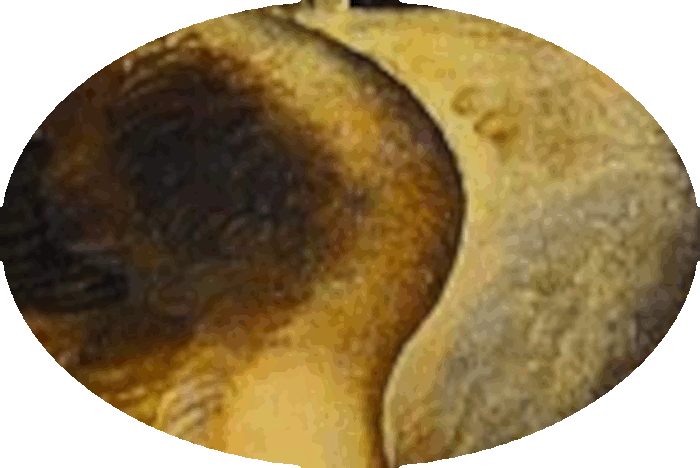
DaVinci
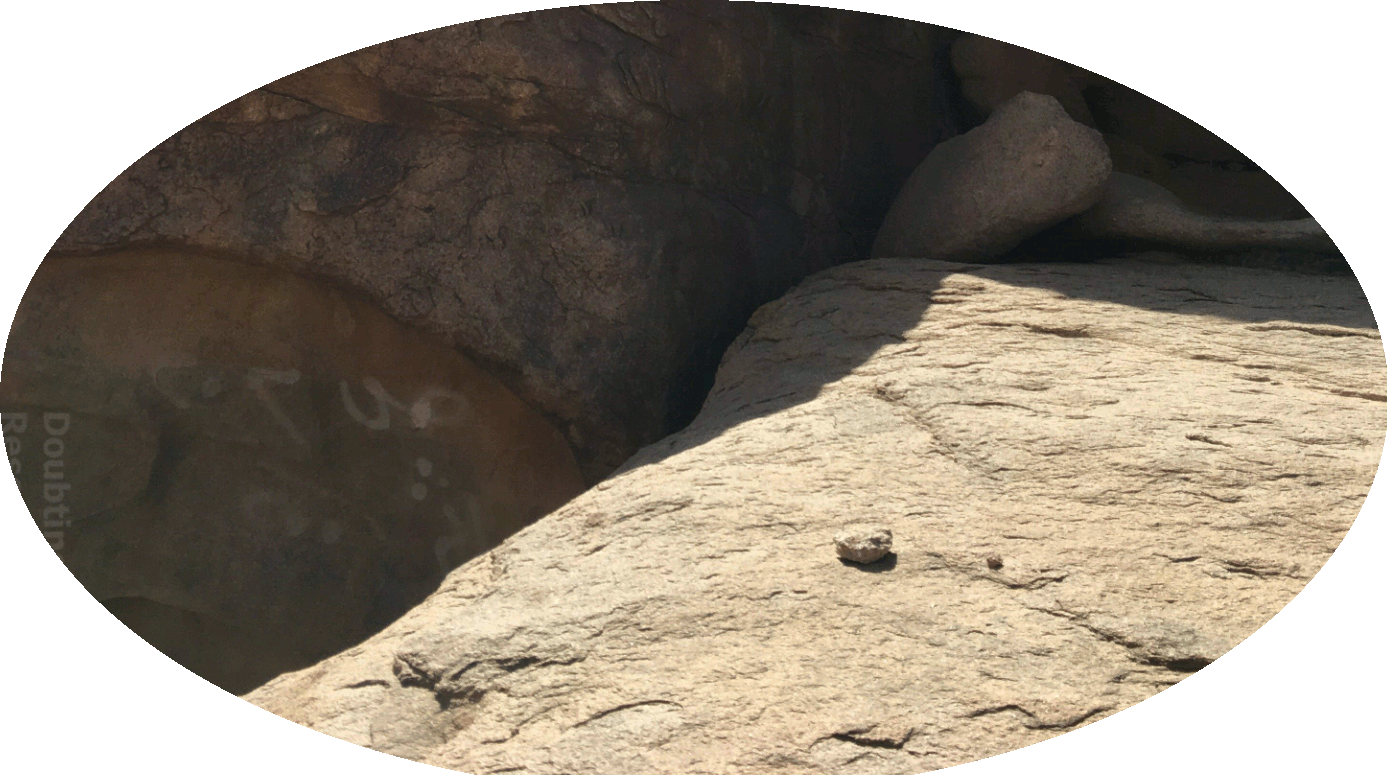
Doubting Thomas Research
Jabal Maqla, Saudi
Arabia
|
- Golden Calf worship.
- jabalmaqla.com
|

Ships that skim clouds
|
What are these ships that skim along like clouds, Like doves returning home?
They are ships coming from distant lands, Bringing God's people home. They bring with them silver and gold To honor the name of the Lord, The holy God of Israel, Who has made all nations honor his people. (Isaiah 60:8-9)
|
|
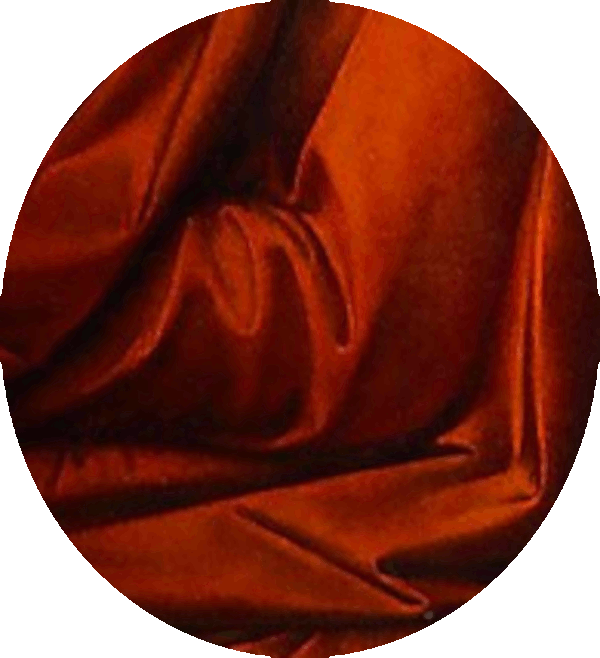
Red vestments
|
- Members of the Order of the Golden
Fleece wear red
vestments and can be seen in family portraits and paintings
from the order.
- The symbol of the order is ram's fleece
(with head and feet) hung on a gold chain with a ring.
- The Austrian branch of the order
passed to House of Habsburg after Philip IIIs son, Charles the
Bold, died and the order passed from the male to his daughter,
Mary of Burgundy, who married the future Holy Roman Emperor
Maximilian I.
- Charles V, the grandson of Maximilian, who
controlled several countries in Europe; Spain, Netherlands,
Austria, Germany and parts of Italy, abdicated from several of
his thrones at the end of his life and left the order in
Austria and with the Spanish Habsburgs including Burgundy.
- In 1700, the Spanish Habsburg went extinct under the rule of
Charles II after he died without an heir.
- The Order of
the Golden Fleece still continues today with Queen Elizabeth
II as one of the more current members.
|
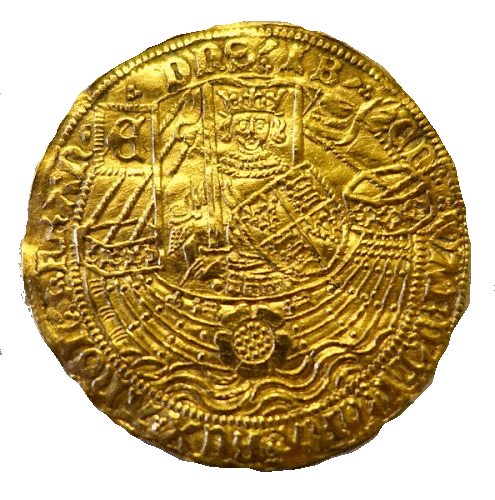
Edward IV Coin
|
- After the death of his father, Richard of York in 1460, Edward took over leadership of the Yorkist faction. His father had been declared the king's heir by parliament, but Edward took the further step of proclaiming himself king in March 1461.
- He later forced Henry VI into exile in Scotland after
defeating Lancastrian forces in the Wars of the Roses.
You starvelling, you eel-skin, you dried neat’s-tongue, you bull’s-pizzle, you stock-fish – O for breath to utter what is like thee! – you tailor’s-yard, you sheath, you bow-case, you vile standing tuck! (Shakespeare,
Henry IV)
|
|
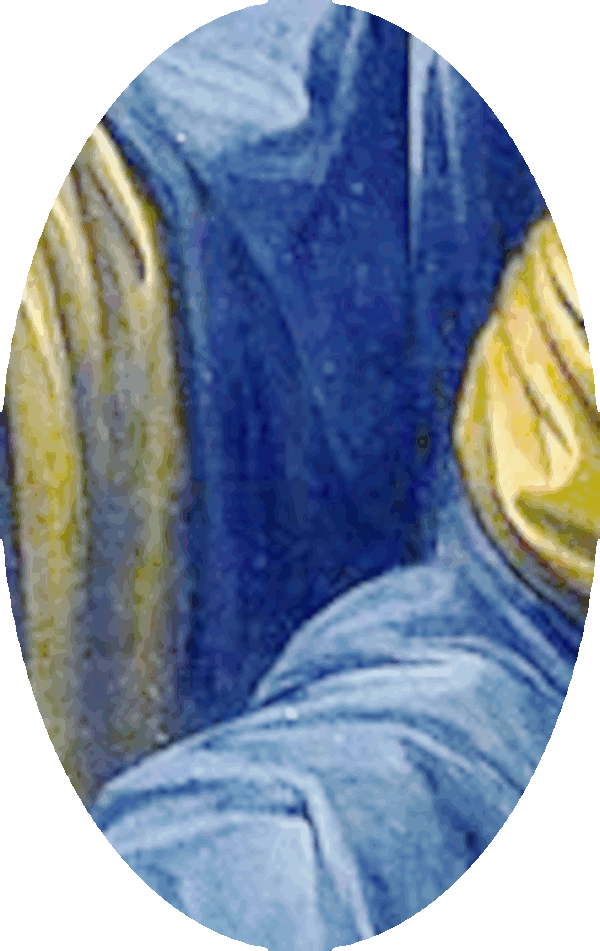
Edward
V missing
|
- Elizabeth was the mother
of the two missing Princes in the Tower who were never seen
again.
- Richard III and Henry VII both wanted the crown
of Prince Edward V who was supposed to be coronated in 1483.
Uneasy lies the head that wears a crown.
(Henry IV, Shakespeare)
|
|

Elizabeth of York
|
- Daughter, Elizabeth of York married Henry
VII.
- Grandmother of
Henry VIII.
- Shakespeare veiled Edward IV in Henry IV
then he moved on to the next
generation, Henry VI and Richard III.
A horse! A horse! My kingdom for a horse!
(King Richard III, Shakespeare)
|
|
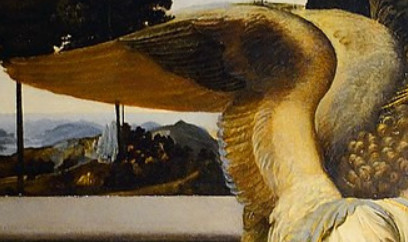
|

LearJet |
- King Lear (Shakespeare) and the Fool.
- All in the family.
- Norman Conquest.
- English
language.
- It's not the words, it's the quest.
When we are born, we cry that we are come to this great stage of fools. (King
Lear, Shakespeare)
|
- Leonardo made reference to a personal failed flight attempt in the Annunciation
referring to a failed mission when he jumped off a hilltop
with one of his inventions and landed in a tree.
- Angel Gabriel’s extended wax wing is
also a pointer to the embedded narrative of the Greek mythology figure, Icarus, who flew too close to the sun and fell to earth.
|
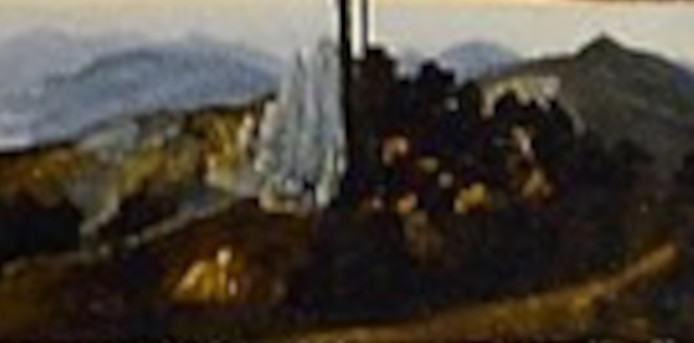

Norman Castle in England
|
- Everything is reversed.
That England, that was wont to conquer others,
Hath made a shameful conquest of itself.
Ah, would the scandal vanish with my life,
How happy then were my ensuing death. (Richard III, Shakespeare)
|

Aster |

Alyssum |

Campion |
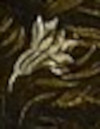
Columbine |
|

Cornflower |

Daisy |
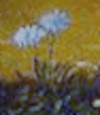
Flax |

Forget-me-not |
|

Hyacinth |

Iris |

Marigold |

Morning Glory |
|
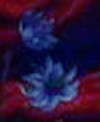
Passion Flower |

Snowdrop |

Star of
Bethlehem |

Straw Flower |
|
- New garden.
- Boline (sickle) for harvesting herbs.
Let our sons in their youth be as grown-up plants,
And our daughters as corner pillars fashioned as for a palace. (Psalm 144:12)
|
|
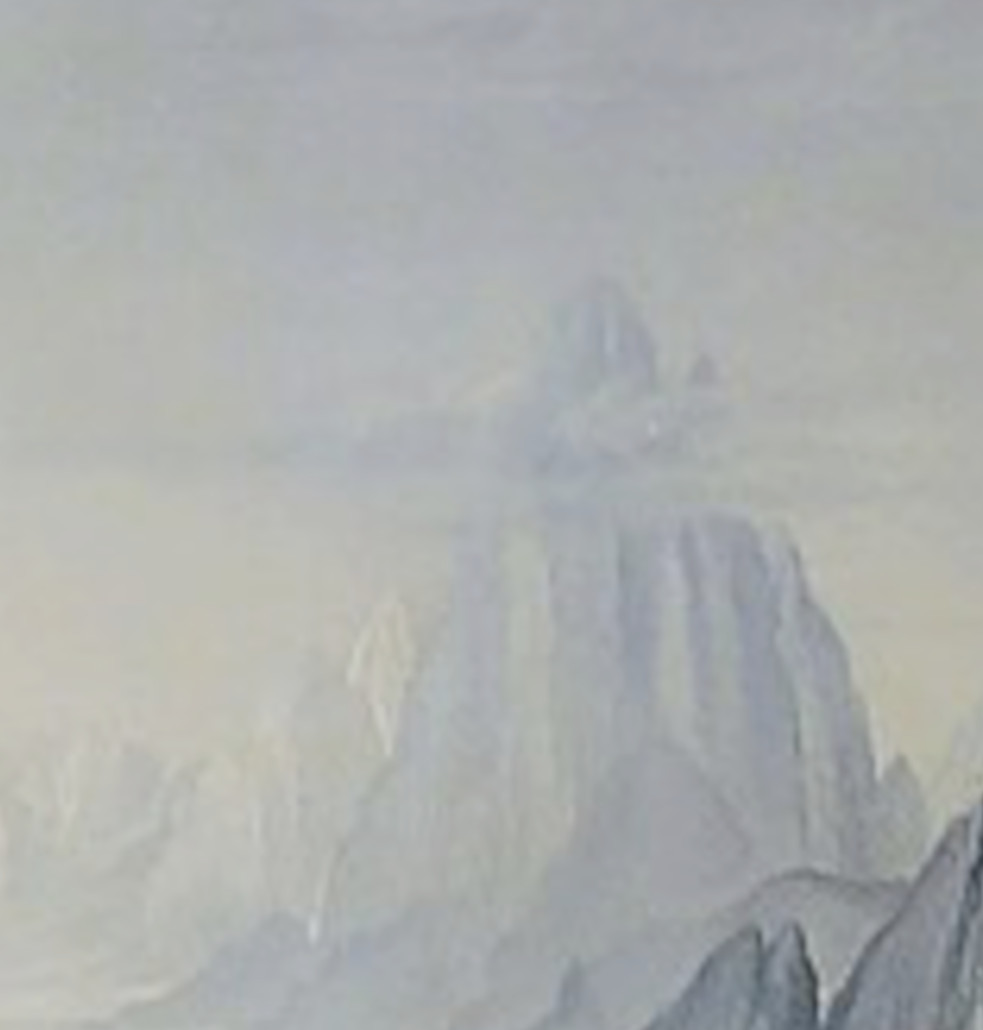
Antarctica - A23a
|
- Icy.
|

Antarctica - A23a
|
- It's all in the angles.

Antarctica - A23a
|
- The Virgin's skirt.
- It's an
inversion.
|

Antarctica - A23a
|
- Ice skirt.
|

Antarctica - A23a - August 2022
|
- Missing head arrives.
- Slippage.
- No longer a mountain.
|
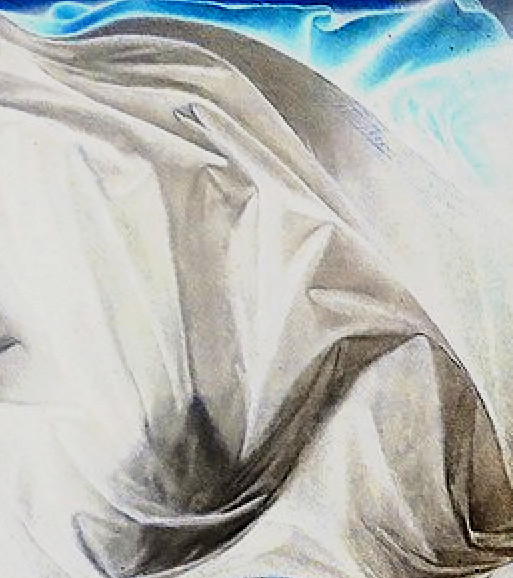
Leonardo - Penguin
|

Emperor Penguin
|
- Antarctica Deep Lake is salty.
|

Emperor Penguin chick by Sue Flood
|
|

Deep
Inner Knowing
|
- Removing the veil shards one by one.
- Not
easy, takes a lot of time and patience.
-
Needs to be done, mental, spiritual and
physical.
- Kundalini, awaken feminine energy
that has been buried and hidden.
- Love
yourself and everyone (with dignity, honor and
respect).
- Third eye revealed.
- Payload.
- Kartika, hook of compassion (cutting through the ego).
- Crowned with Varja (king).
Not like Moses, who would put a veil over his face so that the Israelites might not gaze at the outcome of what was being brought to an end. But their minds were hardened. For to this day, when they read the old covenant, that same veil remains unlifted, because only through Christ is it taken away. Yes, to this day whenever Moses is read a veil lies over their hearts. But when one turns to the Lord, the veil is removed. (2 Corinthians 3:13-16)
|
|
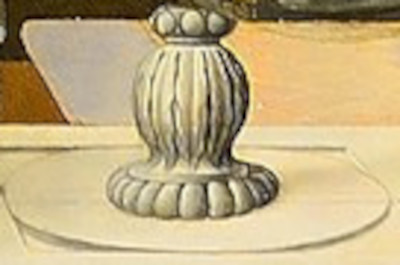
Lotus Flower
|
- Stupa jar.
- Enlightenment.
|
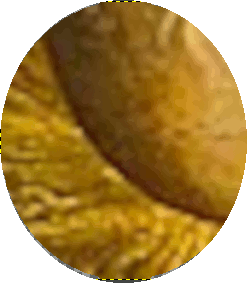
Mussel Byssus Fibers
|
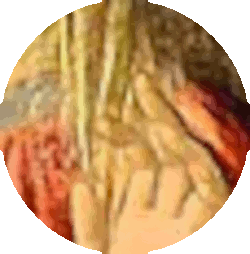
Silk in hand |
- Sea silk, byssus.
- Raw material is the saliva of a large clam, known in Latin as Pinna nobilis.
- Mussel beards.
- Noble pen shell (nacre - mother of pearl).
- Mediterranean.
- Form the crown of certain mossy shells (Tertullian - 3rd century AD).
- Pliny and Aelian, described the mussel, attributing it with great predatory abilities and a certain intelligence.
Each filament of keratin is about 25 centimetres long. To get 300 grams of raw you need to dive one hundred times." Respecting the habitat means collecting only filaments of at least 12 years old Pinna nobilis. "If only the tips of the flocks are taken with caution and method, the animal survives; if it is torn off from the sea bottom, the mollusc dies.”
”The byssus cannot be sold or bought; it is given.” (Chiara Vigo, the last Byssus Master)
|
|
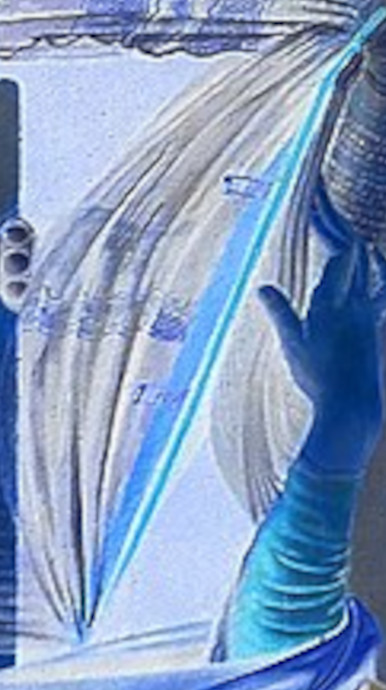
Spinning
|
- Silk spinner.
- What a web we weave.
- Gloves on.
- Spindle whorls (another gossipy whore-her story).
- Whorl foot.
The filaments produced by the shell - a sort of burr - are keratin (the same substance as hair and nails). They solidify in contact with water and produce a brownish scale encrusted with shells, algae, and small corals that, once worked and bleached, becomes a golden, soft, and resistant thread.
In Rome byssus was considered so valuable that it was sold for gold, as confirmed by the edict of Diocletian. It mainly came from Egypt, Scythopolis near Damascus in Syria, from Tarsus in Cilicia, and from Apulia and Sardinia in Italy, but not in large quantities. (ancient-origins.net)
|
|
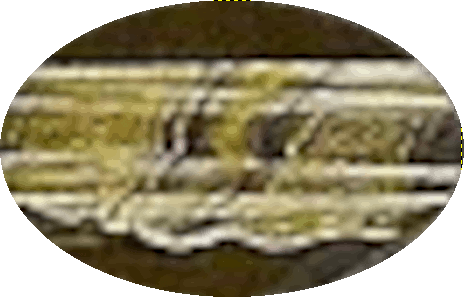
Woven
|
- Extremely light and shines like gold.
-
In Egyptian hieroglyphs it was called “royal linen.”
- Egyptians used to wrap corpses with bandages cut from byssus cloth and coated with rubber.
- Lifting a golden fleece that so far none of the dyers has been able to imitate (Basil the Great
- 4th century AD).
“Soon I had put on my byssus clothes… I informed
him that they were made from the smooth, silken
filaments with which the fan mussel, a type of
seashell quite abundant along Mediterranean beaches,
attaches itself to rocks. In olden times, fine
fabrics, stockings, and gloves were made from such
filaments, because they were both very soft and very
warm.” (Jules Verne - 20000 Leagues Under the
Seas 1870)
|
|
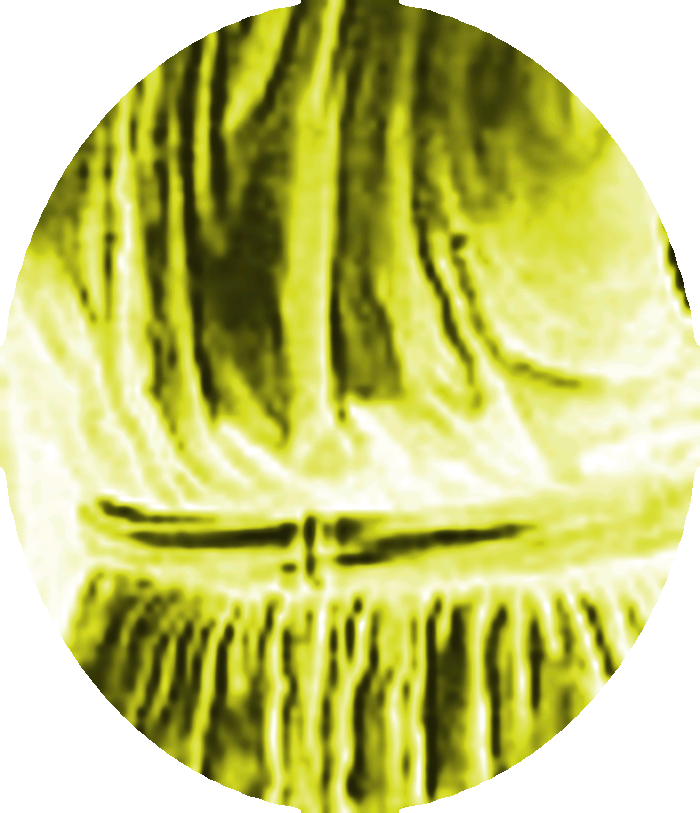
Tarantinids, diaphanous, soft, light, golden-colored
feminine dress typical of Taranto
|
- Cleopatra was dressed in byssus on the day of the Battle of Actium (31 BC).
- Cloak made of wool, not such as is produced by sheep, but gathered from the sea (Procopius (6th century AD).
- Byssus and pure linen –
The burial cloths of Christ.
Thus wast thou decked with gold and silver, and thy raiment was byssus, and silk, and embroidered work. Thou didst eat fine flour, and honey, and oil; and thou becamest exceedingly beautiful, and thou didst prosper into a kingdom. (Ezekiel 16:13)
|
|

Chinese Dragon Boat
|
- Silk
shipment.
- The finest fabric known to ancient Egypt, Greece, and Rome.
- Knitted sea-silk glove from Taranto, Italy,
1880.
- One
of the most valuable goods ever traded.
Beginning in the Eastern Han dynasty (25–220 AD), Chinese histories document importing sea silk. Chinese language names include "cloth from the west of the sea" and "mermaid silk." (Wikipedia)
|
|
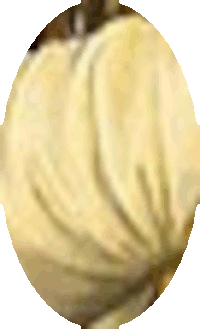
Silkworm cocoons
|
- The decline of byssus yarns began
500 AD during Emperor Justinian
reign, when mulberry moss, better known as silkworm, was introduced to Europe.
- The production of
silk then spread to
Europe, mainly
Italy, but required
more refined
techniques to
produce and higher
costs.
- Towards the end of the 19th century the textile use of byssus was completely abandoned.
- Over time, many other linens (from the land)
were confused with sea silk or byssus such as
fine linens made from flax.
- Leonardo
thought it was a big deal in Italy.
The barge she sat in, like a burnish’d throne,
Burnt on the water. The poop was beaten gold;
Purple the sails, and so perfumed that
The winds were love-sick with them; the oars were silver,
Which to the tune of flutes kept stroke, and made
The water which they beat to follow faster,
As amorous of their strokes. For her own person,
It beggar’d all description: she did lie
In her pavilion – cloth-of-gold of tissue –O’erpicturing that Venus where we see
The fancy outwork nature.
(Shakespeare,
Antony and Cleopatra)
|
|

Silk Stockings
|
- Special
order for the Order
of the Golden
Fleece.
The spinning of byssus remained only a local tradition in small individual production centers, especially in Italy (Puglia, Calabria, Sicily, Sardinia), France (Corsica), Greece, and Turkey.
They mainly produced garments to wear under armor, to reduce weight and heat (like linen under the famous iron crown of Charlemagne), or small items such as gloves, socks, caps, etc. (ancient-origins.net)
|
|
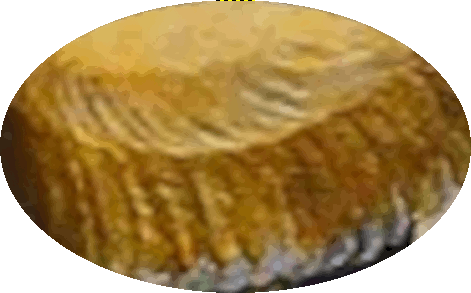
Wool
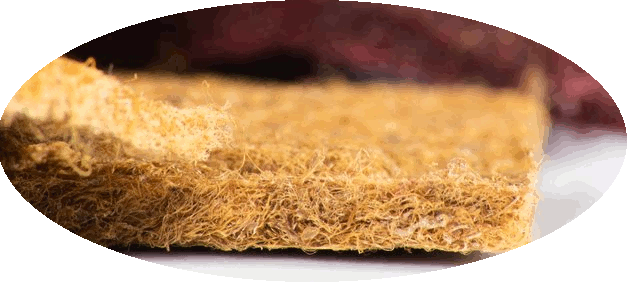
Seastex mussel waste wool
|
- 'Seawool'
a breakthrough in textile innovation.
- A new
process that
combines highly
polluted mussel
waste into a
cloud-like substance
that can be used for
insulation and
construction
purposes.
- Fire
retardant, water
resistant,
mouldable,
recyclable, no
micro-plastic (seastex.com).
|
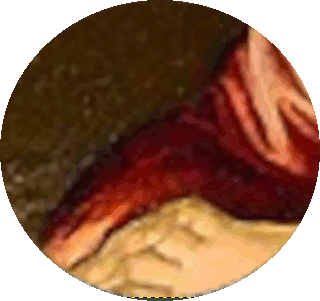
Murex snail
|
-
The most precious dye used was purpura, the Tyrian purple (also known as Phoenician red).
- Extracting this dye involved tens of thousands of snails and substantial labor, and as a result, the dye was highly valued.
- Rams there were,
well-fed and thick
of fleece, fine
beasts and large,
with wool dark as
the violet. (Homer, Odyssey 9.425)
Semiramis florished before Jacob, and in her reign byssus was invented; this, which afforded materials for the richest garments, has often been used to designate silk.
The royal apparel, which Mordecai received from King Ahasuerus, was, without doubt, says Dr. H. a Medic garment [...] Jason then conceived the design of seeking in Asia the famous golden fleece; in his time lived Medea, princess of Colchis, to whom the Medic habit has been ascribed.
Jason went into Colchis and into Media, and it appears that the golden fleece was the Medic habit. [...] it may be said, that [Jason] went to seek a fleece and not silk, now the ancients called silk a fleece. [...] Silk, therefore, might have been this fleece; in its natural color it resembles gold; the raw silk often appears like threads of gold; and if ears of corn, if light colored ringlets, are denominated golden, surely the poets might give to silk the title of a golden fleece.
In the time of Aurelian silk was equal in price to gold; and the epithet derived from gold seems highly applicable to silk, when we consider the admirable union of both in the brocades of Persia, manufactured in very early ages. (Review of Pantheon Chinois by J. Hager,
The Classical Journal 1, no. 2 (June 1810): 179-181.)
|
|

Golden
and Tyrian purple
|
-
Ancient text.
- In Exodus, byssus is represented
with a different name than in Chronicles,
indicating textiles from separate sources as
time passed which were all known as 'fine linen.'
- Watch: Biblical Proof of the Narcissists Bleak Future.
- Leonardo's text consists of 13 lines in red
and black ink of which the 13th line is touched
by the tip of Mary's finger which is
deliberately separated from her other fingers,
indicating its importance.
- Red ink was
commonly used in headings, and black ink was
used in the text.
- The lettering itself, so
far has not been deciphered because it
represents a complex mix and intermingled
composition of both known and unknown
characters.
- It is very distinct, and well
delineated, not blurred to give the impression
of text, but suggesting the script of an unknown
language or perhaps the contrived action of
Leonardo to take the viewer back and forth
between the known and unknown, which is
something he was famous for.
- This book was
the only example of text that he ever painted in
any of his work.
According to Jewish tradition of Kabbalah which was spread during the Renaissance period and through the work of philosopher and alchemist Henricus Cornelius Agippa, the number 13 symbolized the birth of the Messiah foretold by prophecies, since it was 13 days after the birth of Christ that the guiding star or comet appeared, bearing witness to a transformation and spiritual rebirth for the whole of humanity. (Diego Crociani and Caterina
Marrone)
|
|


This four-tiered cult stand found at Tanaach is thought to represent Yahweh and Asherah
|

Pillar and cap |
- We have a pillar cap (capital) with a missing pillar!
-
Roman Composite capital.
- Mary Magdalene is in the pillar.
- Mary Magdalene is in the
lip (ral-lip).
- The
middle pillar of three
pillars.
- Virgin Mary of
the Pillar.
- Support,
backbone, strength.
-
Djed, Egyptian hieroglyph
represents stability, Osiris
spine.
- Egypt is pretty
much treeless.
- Paw feet.
- Acanthus leaves, Abacus
flowers, Pomegranates.
- Cassone, placed in
the bridal suite.
Byssus was first woven into cloth in the Kingdom of Colchis on the Black Sea. Jason and the Argonauts called the elusive golden fleece "Colchis," giving rise to the modern theory that the fleece was made from byssus. (Jacques Cousteau)
|
|
|
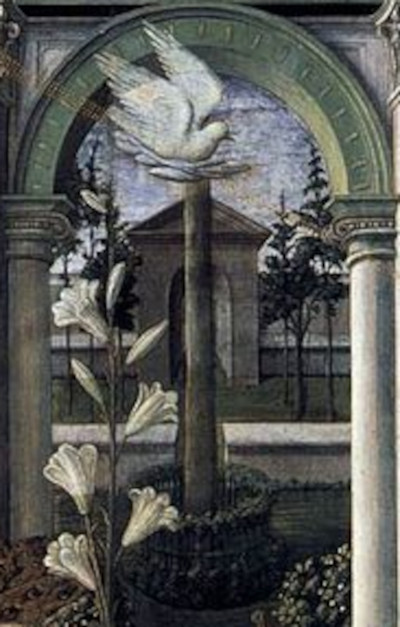
Lippi
Dove
|
-
Filippo Lippi
and his version of
Annunciation.
- The broken column.
|

12/17/2023
|
|
- Tarot High Priestess.
- Divine feminine crown.
- Pearl-bearing scallop
shell signifies Virgin Mary.
- Dhvaja ('victory banner').
|

Modern wheel - rail lip
|
|
- Is that a missing tire or tyre?
- Spikes in tires of
new vehicle (both sides on backend) resulted in tire blow-outs at
same intersection (a month apart), caused by company striking
workers. Had the rest x-rayed.
- Ken-tuc-key.
- Since then
the manufacturer has suffered complete withdrawal from the US market.
- Great product though, really sad what your employees can do. You
see the result every day, everywhere.
- Watch
the rubber too.
|
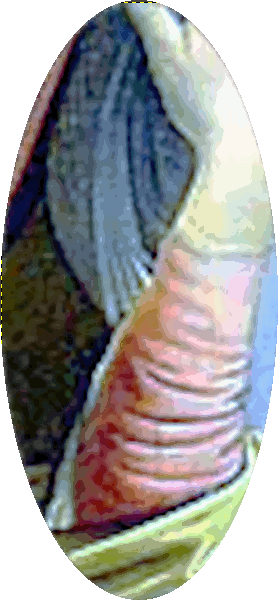
Leonardo checks the tire
|
|
- Perhaps we should x-ray tires instead of
taking airline passengers (nude shots).
- Or maybe we should fire
the bad employees.
- Strike with no retribution, you only harm
yourself.
|

ShannonRail
Railroad track - rail lip
|

ShannonRail
Railroad t-piece
|
- Track circuits for the
railroad signaling system.
- You get
the drift.
- Rail end lipping is the largest single cause of
insulated joint failure during the summer months.
- Temporary fix for 'end rail batter.'
- Key.
-
Separate lingo.
|
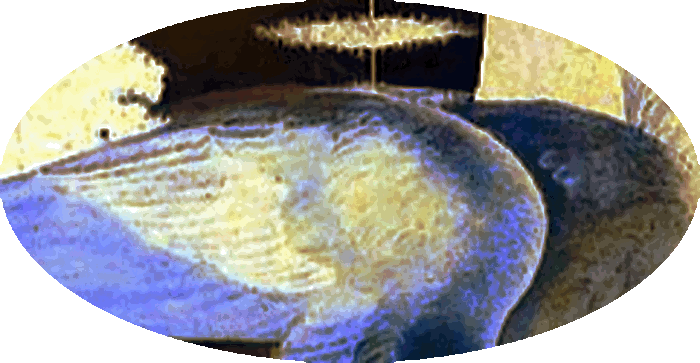
Energy vampire
|
|
- High Priestess has energy stolen.
- Using their
mouth.
And as in uffish thought he stood,
The Jabberwock, with eyes of flame,
Came whiffling through the tulgey wood,
And burbled as it came!
(Lewis Carroll, Jabberwocky)
|
|
|
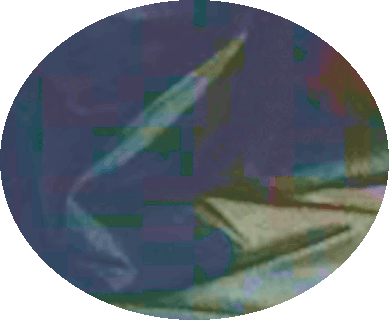
signed by Leonardo DaVinci
|
|

